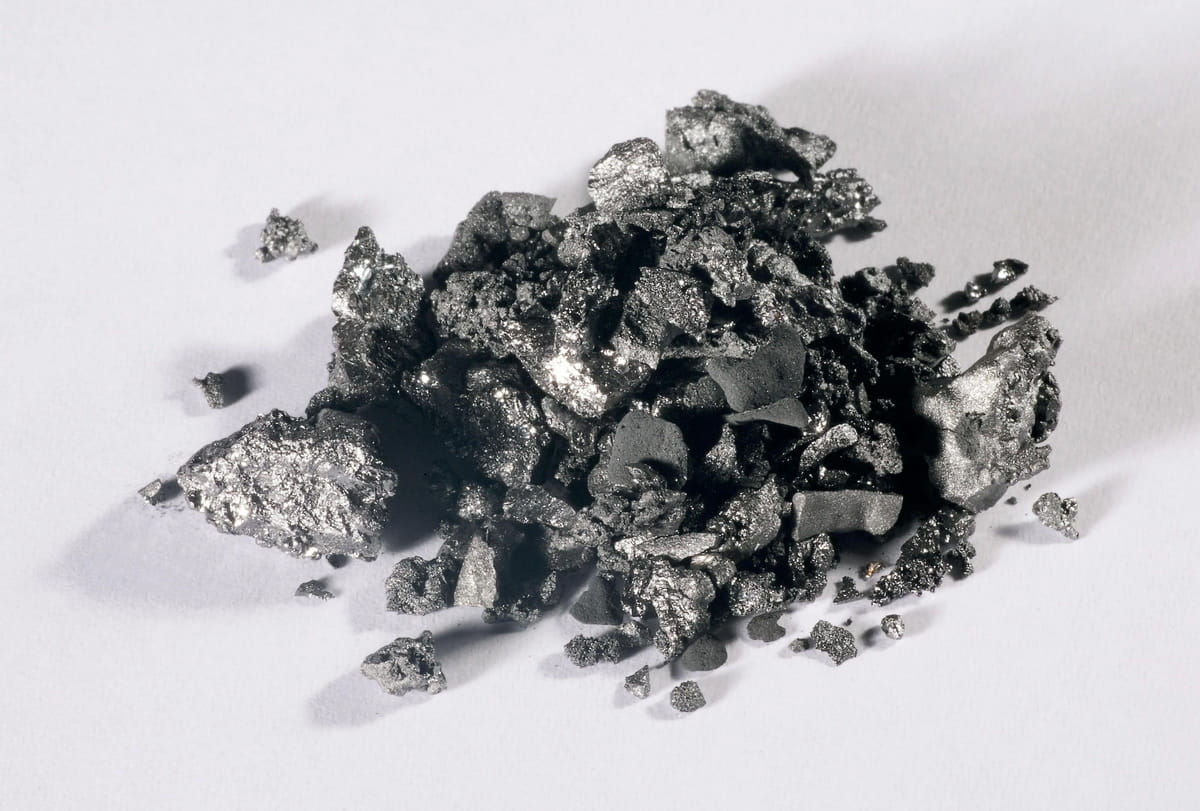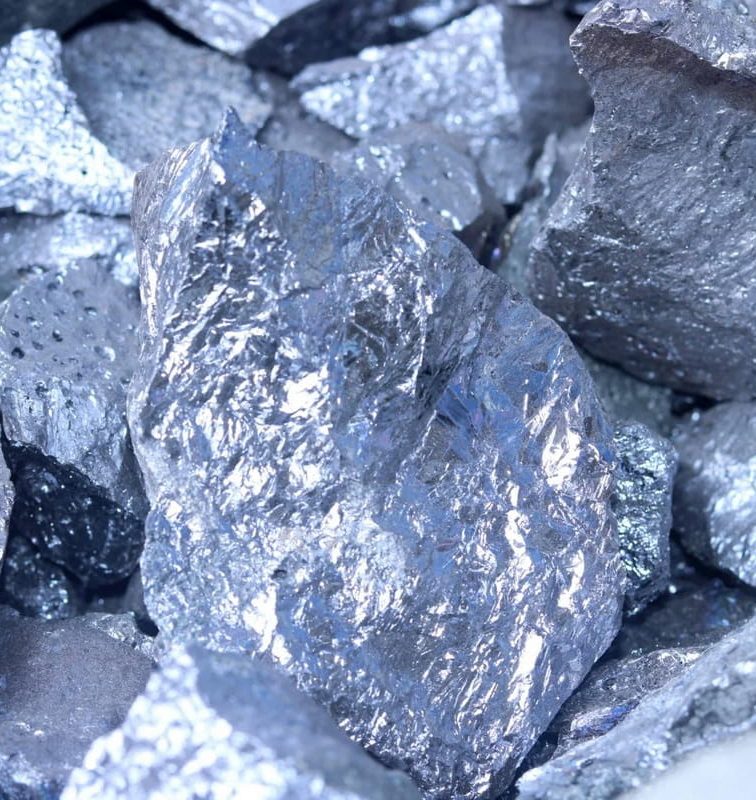Meet boron, a superstar on the periodic table with a unique atomic number of 5. Despite accounting for only 0.001% of the Earth’s crust, this element has made indispensable contributions to everything from agriculture to high-tech industries.
But did you know that this unassuming element has a cosmic origin, links to ancient civilizations, and was a subject of intense 19th-century scientific intrigue? Let’s unearth some riveting fun facts about boron that might just make it your new favorite element.
1. Boron’s Starry Connection: How It’s Made in Supernovas
This might sound like science fiction, but boron is a product of the cosmos! It’s one of the few elements believed to be formed primarily by cosmic ray spallation, a process where cosmic rays collide with other elements, breaking them apart and creating new elements like boron. Astrophysicists believe that boron was created during the aftermath of supernova explosions, where cosmic rays were in abundance.
But here’s a mind-boggler: while boron is relatively rare in the universe and our solar system, it’s more common on Earth because of these cosmic processes.
2. Boron in Name: Deciphering Its Ancient Roots
The name ‘boron’ may sound modern, but its roots are ancient. Derived from borax, a compound that has been used for over 4,000 years, boron’s etymology traces back to the Arabic “buraq” and Persian “burah.” Historical records indicate that borax was used in ancient Asian civilizations, particularly in China by 300 AD, as a flux for soldering gold and later, for medicinal and mummification purposes in ancient Egypt.
Interestingly, boron compounds, like borax, were traded on the ancient Silk Road, showcasing its significance across time and cultures.
3. Sir Humphry Davy’s Quest: The Discovery Tale of Boron
Unraveling boron’s discovery tale brings us to the 19th century, where three chemists – Sir Humphry Davy of England, and Joseph Louis Gay-Lussac and Louis Jacques Thénard of France – were on a quest to discover new elements. In 1808, through an intricate process involving electrolysis of boric acid, they managed to isolate boron.
Though initially obtained as an impure form, this marked the official recognition of boron. Intriguingly, these scientists worked independently but announced their findings within weeks of each other, making boron’s discovery a riveting tale of parallel scientific endeavors.

Sir Humphry Davy, Joseph Louis Gay-Lussac and Louis Jacques Thénard. Image: Britannica / Wikimedia Commons
4. Position on the Periodic Table: Boron’s Special Neighborhood
Right there on the periodic table, between beryllium and carbon, sits boron with its atomic number 5. But boron’s spot is unique. It belongs to the boron group, a cohort of metalloids and metals that includes gallium, indium, thallium, and nihonium. Now, while boron is a metalloid, its neighbors range from being post-transition metals to a superheavy synthetic element (nihonium).
The periodic table’s design gives boron a place of distinction, amidst elements with a rich variance of properties. It’s like the quiet individual in a dynamic neighborhood, holding its own mysteries.
5. Tiny but Mighty: Boron’s Essential Role in Plants
While humans need boron in trace amounts, plants view this element as a VIP. Boron plays a pivotal role in plant health and development. It aids in the formation and strength of plant cell walls, assists in sugar transport, and even impacts the plant’s reproductive processes.
There’s more. Crops deprived of boron can show symptoms like stunted growth, necrotic spots, and poor fertility. So, every time you munch on a vegetable or fruit, remember, it’s had its dose of boron to be at its best!
6. A Melting Point Enigma: Boron’s Unexpected Resilience
You’d think a relatively lightweight element like boron would be easy to melt. Think again! Boron has an astounding melting point of about 2,076°C (3,768°F). To put it in perspective, gold, the symbol of opulence, melts at just 1,064°C (1,948°F).
This resilience makes boron an excellent choice for high-temperature applications. Whether it’s rocket nozzles or high-performance ceramic parts, boron stands tall amidst the heat, proving its mettle (pun intended!).
7. Dancing Electrons: Boron’s Unique Electron Configuration
Dive into the atomic world, and you’d witness a ballet of boron’s electrons. With just 5 electrons, boron’s electron configuration is 1s² 2s² 2p¹. This means that while it has a full 1s shell, its second shell isn’t complete, giving boron some quirky chemical behaviors.
Because of its electron configuration, boron can form trivalent compounds (compounds where boron forms three bonds). This atomic dance makes boron versatile in chemistry, being a part of compounds ranging from boranes to the ever-essential borates in agriculture.
8. From Glass to Rocket Fuel: Diverse Uses of Boron
Boron, the unsung hero of the elemental world, is astonishingly versatile. Ever wondered why your Pyrex dish doesn’t crack when subject to sudden temperature changes? You can thank borosilicate glass enriched with boron for that, making it a staple in both laboratories and kitchens.
Now, switch gears from the mundane to the exhilarating. Boron compounds, especially boron trifluoride, play a pivotal role in rocket propellants. They contribute to the enhanced stability and energy required for that awe-inspiring liftoff.
But wait, there’s more! Boron doesn’t stop at glassware and rockets. It’s also a key player in creating detergents that keep our clothes fresh, insecticides that protect crops, and even the semiconductors powering our digital devices. To think, this one element has its fingerprints everywhere, from the soap in our bathrooms to the intricate circuits in our smartphones. Its omnipresence underscores how boron, often overlooked, has silently interwoven itself into the fabric of our daily existence.
9. Metalloid Magic: Boron’s Dual Nature
Straddling the line between metals and non-metals, boron emerges as a metalloid. What does this mean? It’s a master of duality, showcasing properties of both metals (like conducting electricity, but only under certain conditions) and non-metals (like forming covalent bonds).
This dual nature grants boron a unique position in the elemental world. Think of it as the chameleon of the periodic table elements, adapting and showcasing characteristics based on its environment and conditions.
10. The Boron Group: Boron’s Elemental Siblings
Boron might be the headliner, but its elemental groupies on the periodic table are stars in their own right. The boron group includes some heavy hitters like gallium (essential in electronics), indium (a key component of touch screens), and thallium (once used in rat poisons, yikes!).
Each member of the boron group brings its own flavor and properties to the table, making this group one of the most diverse and interesting families on the periodic table.
11. Health and Beauty: Boron’s Role in the Human Body
Boron isn’t just about rockets and glass; it plays an intimate role in our health. Though needed in trace amounts, boron contributes to bone health, aids in the metabolism of certain minerals, and might even play a role in hormone regulation. Some studies have suggested it can boost cognitive performance and assist with motor coordination.
Plus, boron finds its way into beauty products, especially in nail care treatments. So, whether it’s inside our body, keeping our bones strong, or on the outside, ensuring our nails are on point, boron’s touch is invaluable.
12. The Elusive Pure Form: Rare Sightings of Elemental Boron
Elemental boron in its pure form is quite the elusive character. While it’s abundantly present combined with other elements in boron compounds, spotting pure boron is a rarity. When isolated, it’s a hard, crystalline material. But what’s truly fascinating is its form: black or dark brown, and possessing a metallic shine.
Though difficult to isolate due to its affinity for oxygen, pure boron, when achieved, showcases some extraordinary properties, including superconductivity at certain temperatures.
13. Boron in Tech: Its Role in Modern Gadgets
Swipe your phone screen or type on your computer, and you’re likely interacting with boron! Used in the form of boron nitride and borosilicate glass, boron finds its way into many modern tech gadgets. Boron nitride, in particular, stands out due to its exceptional heat resistance and electrical insulating properties, making it a darling for semiconductor technologies.
From the clear, durable glass on our smartphones to components inside them ensuring they function optimally, boron truly is a silent tech warrior.

Image by bublikhaus / Freepik
14. Boron’s World Tour: Where It’s Found on Earth
Embarking on a global tour in search of boron? Set your sights on Turkey, the USA, and Argentina. Turkey, in particular, holds the title of the world’s largest boron reserves. These regions are rich in borate minerals, especially in places with a history of volcanic activity or extensive evaporation.
These mineral deposits are extracted and then processed to yield boron compounds used in countless applications. From the serene landscapes of Turkey to the vastness of the USA, boron’s earthly treasures are generously spread.
15. Science Fiction Reality: Boron Neutron Capture Therapy
Venturing into the realm of medical science fiction, boron introduces us to Boron Neutron Capture Therapy (BNCT). It sounds futuristic, but it’s a real, promising technique for treating certain types of cancer. Here’s how it works: Cancer cells are targeted with compounds rich in boron. These cells are then exposed to neutron radiation. Boron atoms capture these neutrons and produce high-energy alpha particles that destroy the cancer cells from within!
It’s a cutting-edge medical procedure that’s still in its developmental stages but showcases boron’s incredible potential in healthcare.
FAQ
Who discovered boron?
Boron was co-discovered in 1808 by two sets of chemists: Sir Humphry Davy in England and Joseph Louis Gay-Lussac and Louis Jacques Thénard in France. While both teams used different methods, they simultaneously recognized the existence of this new element. It’s interesting to note that while they managed to isolate boron, it wasn’t in its pure form but rather as boric acid or borates.
What is unique about boron?
Boron boasts several unique properties. As a metalloid, it beautifully dances on the line between metals and non-metals, showcasing traits of both. It forms covalent bonds like non-metals, but under certain conditions, it can also conduct electricity, much like metals. Its crystalline form is hard and black with a metallic shine, and its ability to form stable covalently bonded molecular networks gives it high melting points uncommon for such a light element.
What is boron used for?
Boron’s versatility is quite impressive. It’s used in borosilicate glass, which is known for its resistance to thermal shock. It’s also used in detergents, as an ingredient in rocket propellants, and even in semiconductors. Additionally, boron finds use in agriculture, specifically as a nutrient necessary for the optimal growth of certain plants. The medical field has also recognized boron’s potential, particularly in the experimental Boron Neutron Capture Therapy for treating cancer.
How rare is boron?
While boron isn’t one of the most abundant elements on Earth, it’s not extremely rare either. Boron makes up about 0.001% of the Earth’s crust by weight. However, it’s not uniformly distributed; there are specific regions, like parts of Turkey and the USA, where it is more concentrated.
Where is boron found?
Geographically speaking, Turkey takes the lead, housing the world’s largest boron reserves. Other significant sources include the USA, specifically in California, and Argentina. In terms of its natural state, boron is typically found combined with oxygen in compounds called borates. These are usually mined from large deposits in the aforementioned regions.
Is boron toxic to humans?
In trace amounts, boron is beneficial and even essential for our health. It plays a role in bone health and the metabolism of certain minerals. However, like many substances, it’s all about the dosage. Ingesting excessive amounts of boron can be toxic to humans, leading to symptoms like nausea, vomiting, and potential long-term effects. That said, the average diet typically contains safe boron levels, and toxicity cases are relatively rare.
Why is boron so important?
Boron’s importance is multifaceted. In the realm of agriculture, it’s an essential micronutrient for certain plants. In industry, its properties make it invaluable in creating heat-resistant glass, semiconductors, and more. Even in the medical field, boron shows potential, especially in innovative cancer treatments. Its ability to bond with other elements in diverse ways makes it a cornerstone for many applications.
Is boron magnetic?
Pure boron is not intrinsically magnetic. However, certain compounds or alloys that contain boron can exhibit magnetic properties. One of the most notable examples is neodymium magnets, which are a type of rare-earth magnet composed of neodymium, iron, and boron. These magnets are incredibly strong and are used in a variety of applications from hard drives to headphones.







